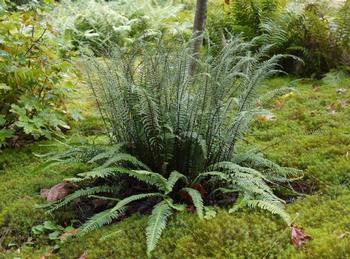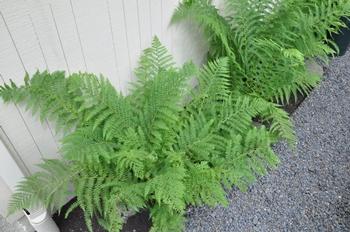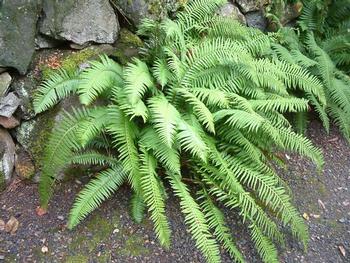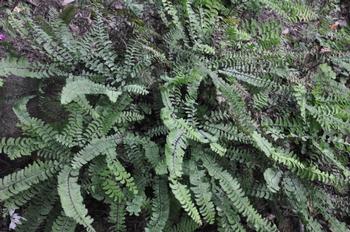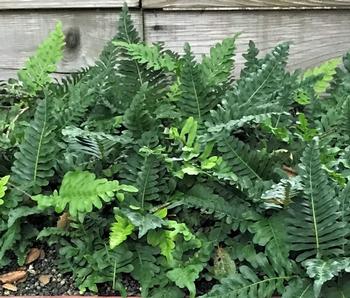Ferns: ancient plants for modern gardens
-
Ferns are among the oldest plants on earth, with fossil records dating back hundreds of millions of years. There were 125,000 fern species thriving in the Carboniferous era 360 million years ago. These plants dominated the earth, some of them growing hundreds of feet tall and providing lush vegetation throughout the ages. Like the dinosaurs, most of these plants went extinct millions of years ago, leaving behind the fossilized form in immense beds of coal that we continue to tap today.
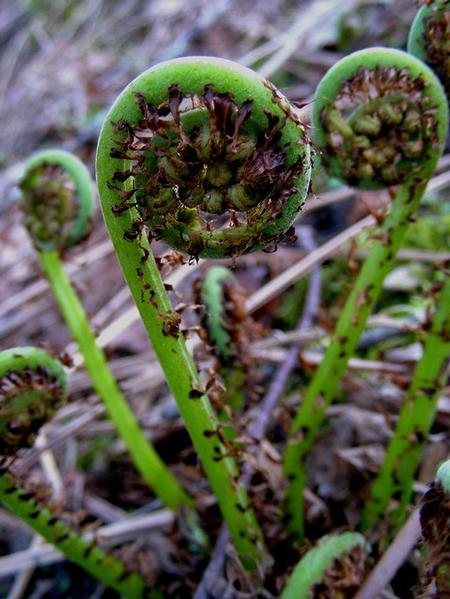 Ostrich Fern (Matteuccia struthiopteris). Photo courtesy of Flicker Photo Sharing
Ostrich Fern (Matteuccia struthiopteris). Photo courtesy of Flicker Photo SharingFerns: versatile and easy to grow
We also tap the plants themselves, thanks to their versatility, attractive foliage, and ease of growing. There are over 12,000 species of ferns today, some that live up to 100 years. Gardeners rely on the cool green tones to provide a lush, tropical feel to shady garden nooks. Ferns also make nice houseplants, so long as there is enough humidity inside for them to thrive. For this reason, it may be helpful to mist them in winter when the heater is running regularly. Many florists rely on gorgeous lacy fern foliage for floral arrangements, each frond adding a delicate, highly textural touch.Ferns are found in all parts of the world and have adapted to a wide variety of climates -- surviving hot to freezing temperatures, low and high elevations, and vastly different terrains from deserts to snow-covered mountains. The four habitats that ferns call home include moist, shady forests, sheltered crevices in rocky cliffs, acidic wetlands such as bogs and swamps, and tropical regions.
Ferns range in size from tiny plants growing in rock crevices to more than 50-foot-tall tree ferns. Many ferns appreciate regular moisture, but some, such as California’s giant chain fern (Woodwardia fimbriate) and western sword fern (Polystichum munitum) can even survive drought. Some ferns don’t even need soil, growing as epiphytes out of large tree branches instead. Best of all, ferns are often ignored by deer -- although we know there is an occasional tasting of even the most deer-resistant plants.
No flowers? No problem.Ferns are perennial plants that reproduce by spores and do not produce flowers or seeds. Ferns have roots, stems, and leaves (often called fronds) and a well-developed vascular system that moves food and water through the plants. New leaves often grow by unrolling from a tight spiral called a “crozier” or “fiddlehead fern.” Some fiddleheads, like the Ostrich fern fiddlehead, are considered a culinary delicacy and are available for a brief period in early spring. Not all fiddleheads are edible, however, so purchase them from a reliable source or take a fern expert with you when gathering, much as you would when hunting for mushrooms.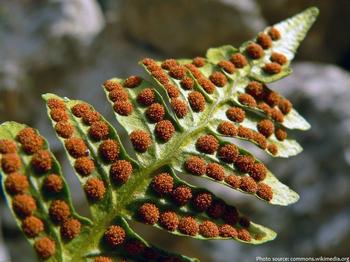 Spores often look like small dots on the undersides of the fronds. Photo: Creative Commons
Spores often look like small dots on the undersides of the fronds. Photo: Creative Commons
Fern spores are produced in specialized organs called spore cases or sporangia. Spores look like dots on the undersides of the fronds. Ferns drop millions of sports onto the ground. When a spore finds the perfect environment, it grows into a fern.
Marin County Native Ferns
Ferns do well in our Mediterranean climate. The California Native Plant Society has identified over 35 native fern varieties belonging to 11 different fern families in Marin County. You can find these ferns growing on hillsides, valleys, woodland forests, along the coast, and in your own garden. Here are just a few of types of native ferns you may find in Marin County.Photos courtesy of Gardensoft
Original articles by the California Native Plant Society and Jane Scurich for the Marin IJ
Edited for the Leaflet by Lisa MacCubbin



